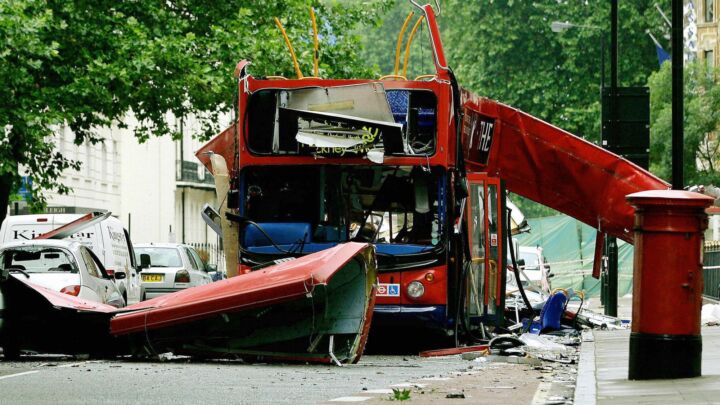Not enough Culture Online
State-sponsored chatrooms don't increase public access to culture.

Want to read spiked ad-free? Become a spiked supporter.
Culture Online, the government’s £13million programme to increase access to the arts, last week launched a new web project, ‘Mad for arts’ – which invited people with ‘mental health issues’ to give their views about a piece of art, architecture or music (1).
Some MPs and commentators took objection to the tactless title, and the patronising musings by Culture Online director Jonathan Drori about the ‘thousands of folk whose mental states give them insights that are out of the ordinary’. Yet nobody took up the idea that ‘Mad for arts’ would help to increase access to culture.
In fact, Culture Online is emblematic of the government’s cultural policy – involving lots of policy but little culture.
Some of its projects give a glimmer of the potential for new technologies to broaden access to the arts. So Kew Gardens’ project on South Asian plants will include 1500 images of rare prints and artefacts, many of which have never been exhibited before.
But this is something that could be taken much further. Thousands of objects and manuscripts in UK archives are too fragile to be seen by the general public. Other artefacts, and the people who know about them, are scattered across different towns and cities – so if you want to look at Britain under the Romans, for example, you would have to dash around from place to place. The web could be used to centralise knowledge and exhibits, making a kind of virtual temporary exhibition that could be seen and used by all.
Meanwhile, archives of images, texts and videos that could be stored online would be unlikely to be represented in TV documentaries or magazine articles. Online sources can be stored in their complete unedited form, free of the pressures of time and space that limit other media. This gives the public freedom to use cultural resources as they see fit, accessing as much or as little as they want, at their own pace.
A step in this direction comes in the Culture Online project ‘Stagework’, which shows how the National Theatre’s play based on Phillip Pullman’s His Dark Materials was put together. The website will use video footage, designs, diaries and interviews with the leading actors to show the evolution of the production from rehearsal to live performance.
But these signs of possibility were snuffed out by cultural officials’ obsession with making connections with people and fostering participation. Instead of furthering access to culture, the bulk of the projects are little more than worthy versions of online chatrooms.
‘Mad for arts’, for example, apparently just wants people with mental health problems to give their views about the arts, regardless of the quality or substance of these views. The Victoria and Albert Museum’s ‘Every object tells a story’ encourages the public to upload their stories and favourite objects to a website, aiming to show ‘how a single object can convey different meanings to different people’. Meanwhile, in ‘WebPlayUK’ primary school children will chat online with a counterpart school about ‘their lives, their school and the area in which they live’; and ‘World War II remembered’ will ask veterans to contribute their memories of war.
The result of most of these projects will be chaos, a mess of opinions and images, which would be of little use to anyone. Perhaps the idea is that lots of ‘voices’ floating around in cyberspace equals more access to culture.
But culture is about more than random individual opinions. It involves social choices, the purposeful moulding of forms or ideas, rather than an anarchic free-for-all. From the earliest human societies onwards, culture has been about people working together to refine things, such as developing techniques for painting pictures or constructing buildings. Rather than creating new websites to allow the public to discover culture in new and better ways, the Department for Culture, Media and Sport (DCMS) encourages spontaneous and chaotic expressions. While we should be pooling resources and knowledge online, the government seems to want to dissipate it.
These projects will always be outdone by real chatrooms. Chatrooms have developed just because people have decided to come together to talk about sex, cars or films – all of which is likely to spark more enthusiasm than the V&A’s worthy chat about objects. Official versions of spontaneous interaction are never going to match up with the real thing.
£13million could have done a lot to increase access to culture online. Too bad that cultural officials are more interested in creating a cacophony of voices than in building something worthwhile.
(1) See the Culture Online website
Who funds spiked? You do
We are funded by you. And in this era of cancel culture and advertiser boycotts, we rely on your donations more than ever. Seventy per cent of our revenue comes from our readers’ donations – the vast majority giving just £5 per month. If you make a regular donation – of £5 a month or £50 a year – you can become a and enjoy:
–Ad-free reading
–Exclusive events
–Access to our comments section
It’s the best way to keep spiked going – and growing. Thank you!









Comments
Want to join the conversation?
Only spiked supporters and patrons, who donate regularly to us, can comment on our articles.